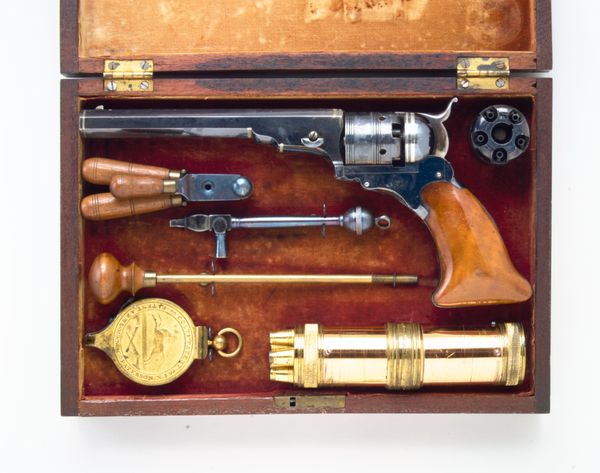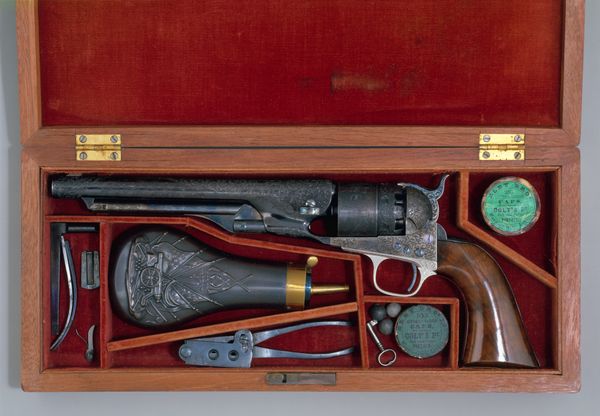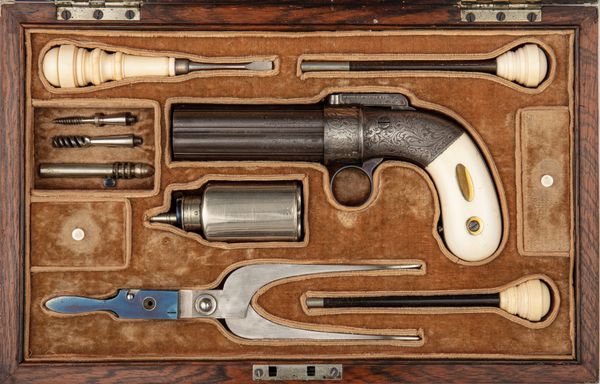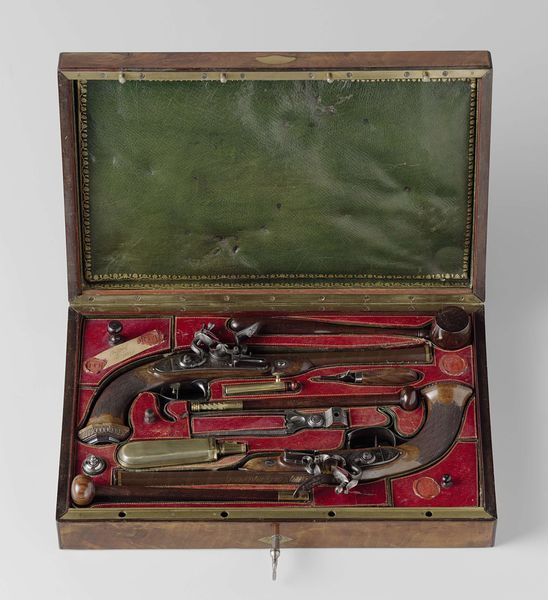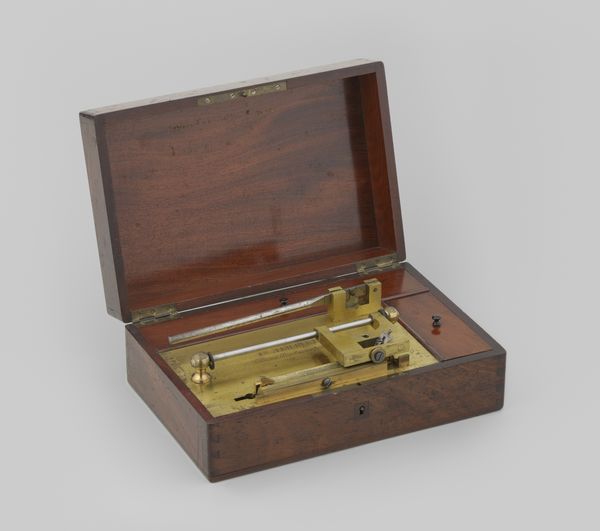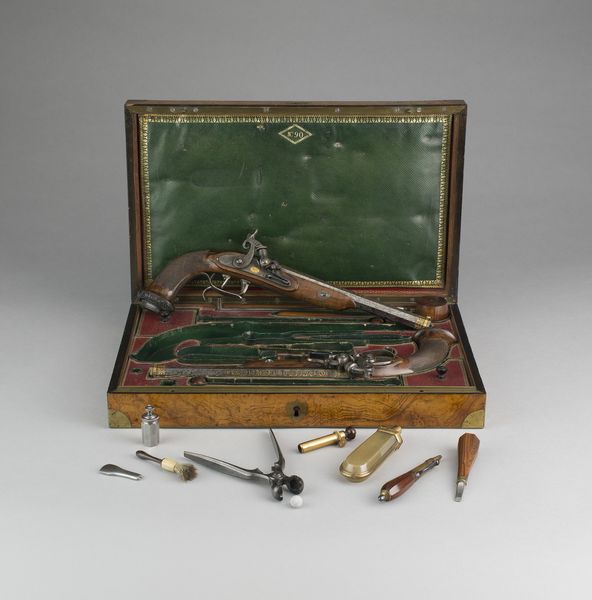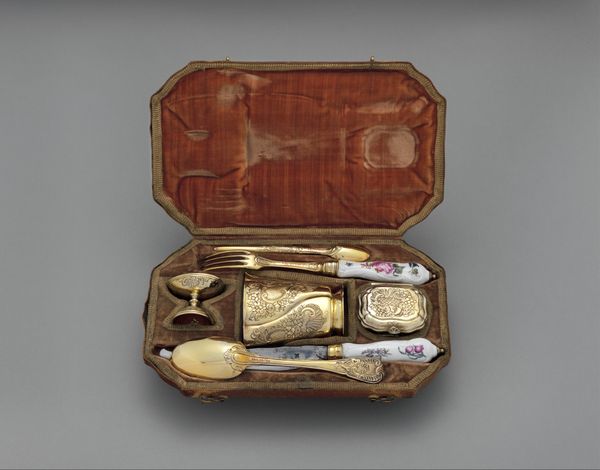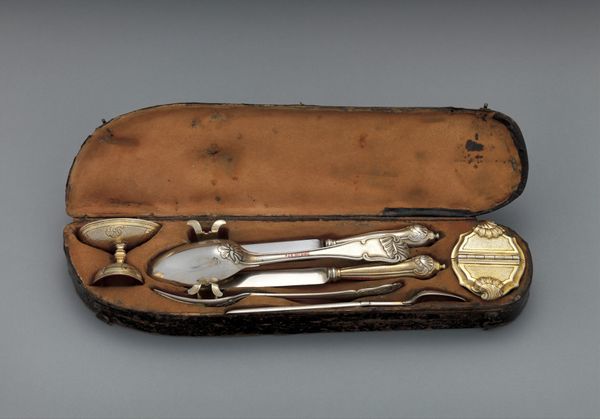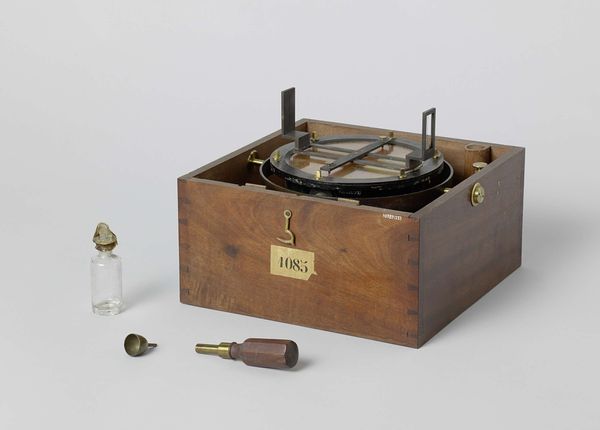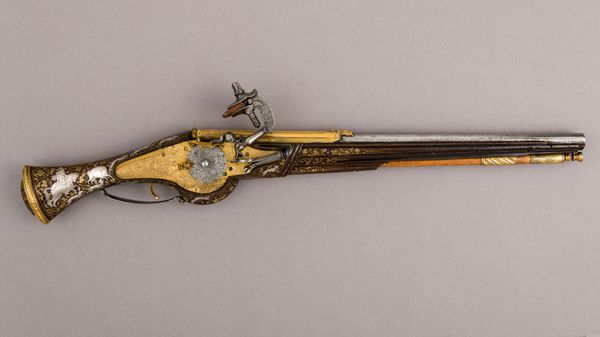
Cased Colt Model 1862 Police Revolver, Serial no. 9174, with Thuer Conversion for Self-contained Cartridges, and Accessories 1862
0:00
0:00
metal, photography, sculpture, wood
#
portrait
#
metal
#
sculpture
#
appropriation
#
photography
#
sculpture
#
united-states
#
wood
#
history-painting
#
armor
Dimensions: Cal. .36 in. (9 mm); case: 15 x 9 in. (38 x 23 cm)
Copyright: Public Domain
Curator: The artistry is arresting, isn’t it? The Metropolitan Museum of Art holds this "Cased Colt Model 1862 Police Revolver" manufactured by Samuel Colt in 1862. Note the elaborate accessories and fitted wooden case. Editor: It does feel both beautiful and deeply unsettling. All those intricately arranged parts speak of precision and lethal intent. A very strange pairing. Curator: Consider the Colt revolver's impact in American history. Beyond its functionality, its aesthetic transformation, its engraved surface, hints at a romanticization of violence during westward expansion. We’re also moving toward mechanized killing—far from the ritualized forms of combat that preceded it. Editor: Absolutely, I agree. I think the presentation adds another layer, the plush interior of the case. Almost as if the pistol is a precious jewel, worthy of reverence. Is this also linked to status? It all suggests this weapon is not just a tool, but also a symbol of power and wealth. The embellishments seem to veil the nature of such an instrument. Curator: Undoubtedly. The very existence of accessories and the luxurious case indicates a privileged owner. Think about the cultural narrative it supports. The idea of the 'civilized' gentleman carrying 'justice' in his hands during an era of enormous upheaval, which in this instance seems to promote both conquest and control. The ornamental style suggests continuity and evokes traditions, but it is still a harbinger of disruption and chaos. Editor: It becomes an artifact loaded with contradictions. The beautiful craft clashes with its inherent function of violence. Its aesthetic appeals, yet the historical context brings awareness to its part in darker aspects of the American West and the period of Reconstruction that followed. Curator: Precisely. The symbols of ornamentation, so often used to signify protection or strength, now adorn an object designed for taking life. Editor: Looking at it this way it seems it could provoke a lot of uncomfortable thoughts on how instruments of death can simultaneously be considered objects of great value. Curator: The tension speaks volumes. Editor: Indeed, it urges us to look deeper and further, beyond just beauty, but at what such objects signify culturally and historically.
Comments
No comments
Be the first to comment and join the conversation on the ultimate creative platform.
